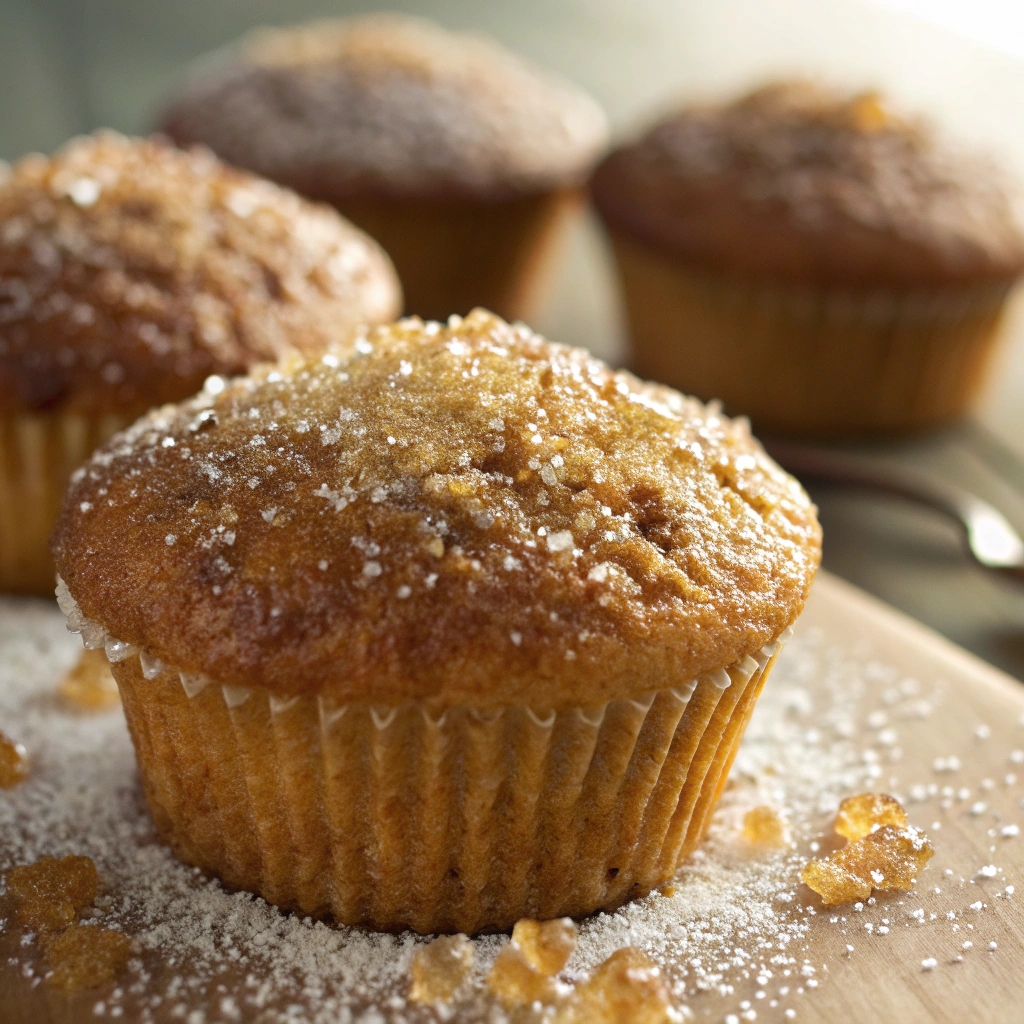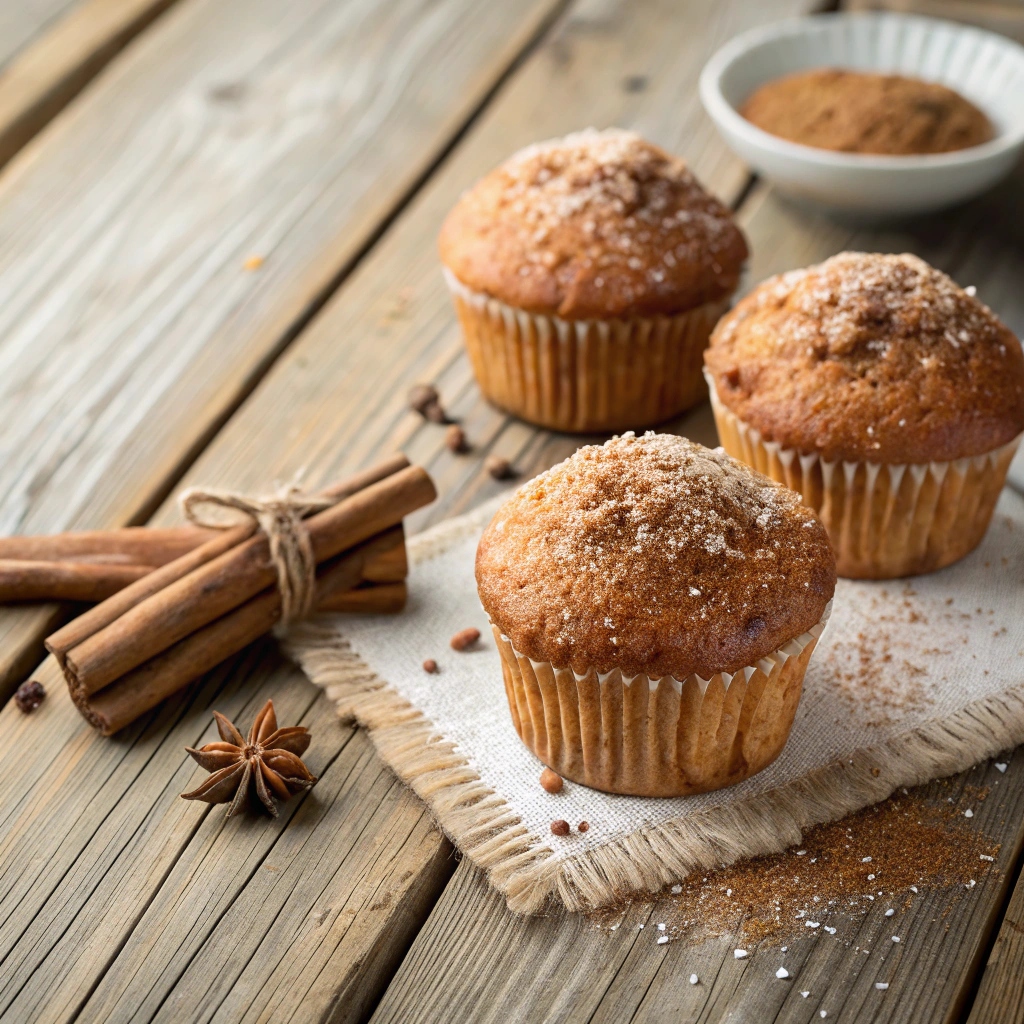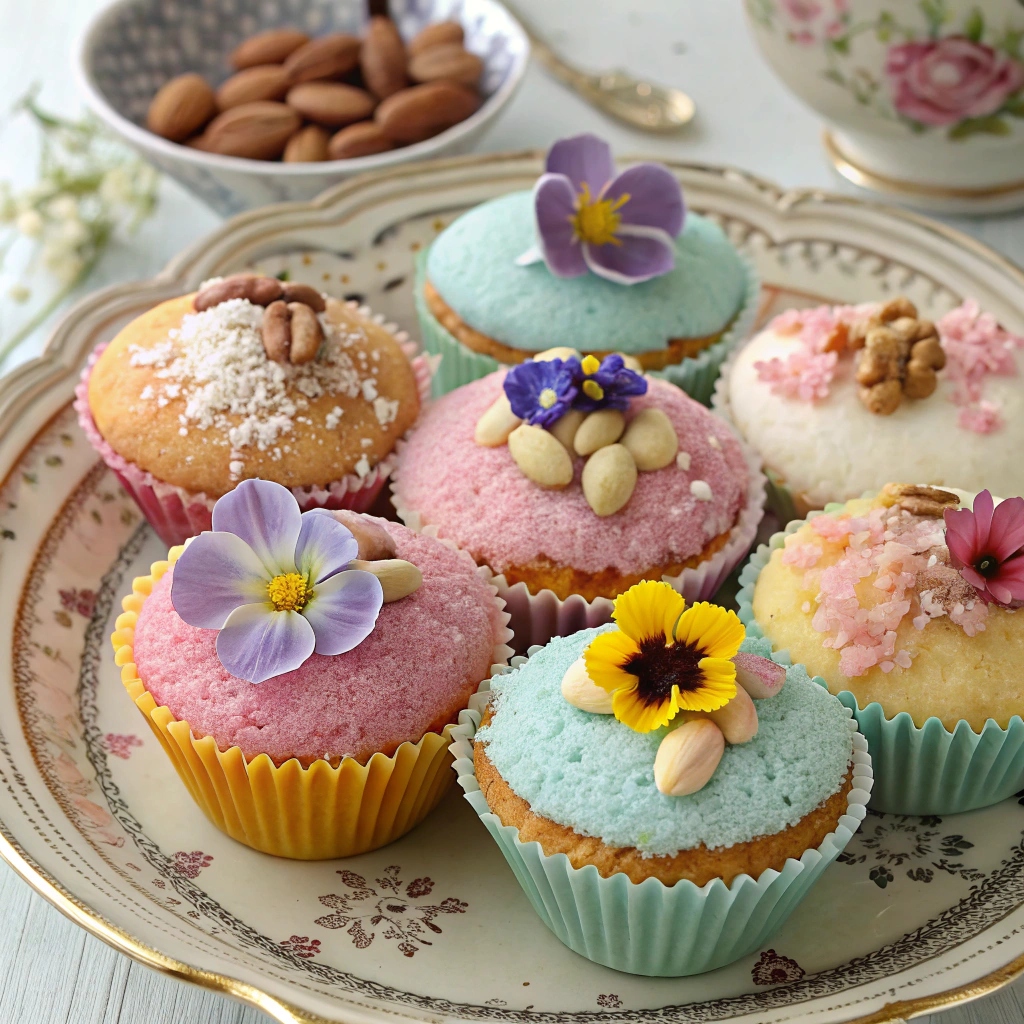Ever wondered about that delightful, crunchy sugar layer that makes muffins irresistibly delicious? If you’ve ever bitten into a muffin and thought, “What is this magical topping?”, you’re not alone! That sweet, caramelized crunch is often made using Demerara sugar, a coarse and unrefined sugar known for its golden crystals. But wait—there’s more to this story than just the name. Let’s dive into the world of muffin toppings and uncover the secrets behind that perfect crunch.
Muffins are like little pieces of edible joy, aren’t they? But it’s not just about the fluffy inside. That crackly, sugary topping is what sets a good muffin apart from a great one. Whether it’s a blueberry muffin with a golden-brown crust or a cinnamon swirl muffin sparkling with sugar crystals, this crunchy layer is often the star of the show.
So, what’s the science, artistry, and flavor behind this topping? Stick with me, and we’ll unpack everything from the types of sugar used to why your muffin tops sometimes don’t achieve that perfect crunch.
Table of contents
The Role of Sugar in Muffin Toppings
Sugar isn’t just a sweetener—it’s a multitasking hero in the baking world. When sprinkled on top of muffins before baking, it caramelizes in the oven, creating a crispy, glossy layer that contrasts beautifully with the soft muffin underneath.
Types of Sugar Used in Baking
When it comes to muffin toppings, not all sugars are created equal. Here’s a quick rundown:
- Granulated Sugar: Common but lacks the crunch factor.
- Brown Sugar: Adds moisture but melts more than it crisps.
- Coarse Sugars: Demerara, turbinado, and pearl sugar steal the show with their large crystals and crunchiness.
What Makes a Sugar Crunchy?
The size of the sugar crystals and their moisture content are key. Larger crystals don’t dissolve easily during baking, keeping their crunch intact. Additionally, sugars like Demerara have a molasses coating that adds extra flavor and texture.
Demerara Sugar: The Star of Crunchy Muffin Tops
Here’s where we zoom in on the MVP: Demerara sugar. If you’ve never heard of it before, don’t worry—I’ve got you covered.
What Is Demerara Sugar?
Demerara sugar originates from sugarcane and retains much of its natural molasses, giving it a slightly caramel-like flavor. Its large, golden crystals are not only visually appealing but also hold up well under the oven’s heat.
“Think of Demerara sugar as the sparkling diamond of your muffin toppings—it adds both beauty and texture.”

Why Is It Perfect for Muffin Toppings?
- Heat Resistance: It doesn’t melt entirely, preserving its crunchy texture.
- Flavor Depth: Adds a caramelized, toffee-like taste that pairs well with almost any muffin flavor.
- Aesthetic Appeal: Those golden crystals look stunning against a muffin’s surface.
Suggested Image 1
- Position: After “Demerara Sugar: The Star of Crunchy Muffin Tops”
- Title: “Demerara Sugar Crystals on Muffins”
- Alt Text: “Golden Demerara sugar crystals sprinkled on a muffin top”
- Description: “Close-up of muffins topped with sparkling Demerara sugar before baking.”
- Prompt: “A macro shot of golden Demerara sugar sprinkled on muffin tops, highlighting the texture and sparkle under natural light.”
Other Sugars That Add Crunch to Muffins
Demerara sugar isn’t the only player in the game. Let’s explore some alternatives:
Turbinado Sugar
Similar to Demerara but slightly less coarse, turbinado sugar is another excellent option. Its light amber color and subtle molasses flavor make it a close cousin to Demerara.
Pearl Sugar
If you’ve ever had a Belgian waffle, you’ve encountered pearl sugar. These small, white sugar lumps don’t melt easily and are perfect for creating chunky, sugary bites.
Brown Sugar Variations
While they don’t deliver as much crunch, lighter or dark brown sugars can still add a soft, chewy texture to your muffins.
Common Problems with Muffin Toppings
Even though adding a crunchy sugar topping sounds simple, many bakers face challenges in achieving that perfect balance. Let’s tackle the most common issues and how to solve them like a pro!
Why Doesn’t My Sugar Stay Crunchy?
Have you ever baked muffins, only to find that your crunchy sugar topping has vanished into the batter? It’s frustrating, but the culprit is usually the wrong choice of sugar or excess moisture.
Causes:
- Using fine-grained sugar that dissolves easily.
- Muffin batter with high moisture content that soaks into the sugar.
- Baking temperatures too low, causing the sugar to melt instead of caramelizing.
Solutions:
- Stick to coarse sugars like Demerara or turbinado.
- Lightly pat the sugar into the batter surface without submerging it.
- Ensure your oven is preheated to the correct temperature (usually around 375°F/190°C).
Tip: “Think of sugar as the muffin’s crown—it should sit proudly on top, not sink into the mix!”
How to Prevent Sugar from Melting into the Muffin Batter
This problem often stems from uneven mixing or excess liquid in your batter.
Quick Fixes:
- Avoid overmixing the batter to keep it light and fluffy, preventing sugar absorption.
- Chill your batter for 10 minutes before baking; this slows down the melting process.
- Sprinkle the sugar just before placing the muffins in the oven.
Tips for Perfect Crunchy Sugar Toppings
Now that we’ve addressed the common pitfalls, let’s talk about how to elevate your sugar game to pro levels. 🎉
How to Properly Sprinkle Sugar for Maximum Crunch
It’s all about technique! Here’s how to sprinkle like a chef:
- Start with Dry Muffin Tops: Excess moisture can dissolve the sugar crystals.
- Use a Spoon or Your Fingers: Sprinkle evenly across the surface for consistent crunch.
- Pat Gently: Press the sugar lightly to adhere it to the batter without burying it.
Ideal Baking Temperatures and Times
Your oven is your best friend—or your worst enemy—depending on how you use it.
Optimal Settings:
- Bake muffins at 375°F (190°C) for the first 10 minutes to caramelize the sugar.
- Lower the temperature to 350°F (175°C) for the remaining bake time to prevent burning.
Pairing Sugars with Muffin Flavors
Not all sugars pair equally well with every muffin flavor. Here are some killer combinations to try:
- Demerara Sugar: Blueberry, banana, or carrot muffins.
- Turbinado Sugar: Cinnamon or nutmeg-based muffins.
- Pearl Sugar: Chocolate chip or vanilla muffins.
- Brown Sugar: Pumpkin spice or apple cinnamon muffins.
“Think of the sugar as your muffin’s dance partner—it needs to complement, not overpower.”
Creative Muffin Topping Ideas Beyond Sugar
Sure, sugar is amazing, but why stop there? Let’s get creative with your toppings.
Adding Spices and Flavor Enhancers
Combine your sugar with a pinch of:
- Cinnamon: Perfect for apple or pumpkin muffins.
- Nutmeg: Adds warmth to banana or oatmeal muffins.
- Cardamom: Ideal for exotic flavors like chai muffins.
Pro Tip: Mix your sugar with spices beforehand for an evenly distributed flavor. Crunchy sugar on muffins

Combining Crunchy Sugar with Glazes or Crumbles
Who says you have to choose between sugar and a crumb topping? Here’s how to combine the best of both worlds:
- Sprinkle Demerara sugar over a streusel topping for double crunch.
- Add a thin glaze post-baking to create a sweet, glossy finish that locks in the sugar.
The Science Behind Sugar Crystallization and Caramelization
Understanding the chemistry of sugar can help you bake better muffins. Let’s dive into the science of why sugar behaves the way it does in the oven.
Why Sugar Behaves Differently in Baking
When exposed to heat, sugar undergoes caramelization, a process where its molecules break down and create new flavors. Larger sugar crystals caramelize slower, which is why coarse sugars remain crunchy.
The Role of Moisture in Muffin Toppings
Moisture is both a friend and a foe in baking. While it keeps your muffins tender, too much can dissolve sugar toppings. Balancing batter hydration and oven heat is key.
Tips for Mastering Crunchy Sugar Toppings
Now that we’ve covered the basics, let’s explore advanced techniques and creative tweaks to achieve bakery-level muffins. 🧁
Layering Sugar for Extra Crunch
Want to maximize the crunch factor? Try layering your toppings:
- Add a thin layer of sugar to the batter before filling your muffin cups.
- Sprinkle more sugar on top once the batter is in the cups.
- For a final touch, add a pinch of sugar halfway through baking.
This layering technique ensures you get a crunchy bite with every nibble.
Pairing Muffin Toppings with Fillings
Think of the muffin as a blank canvas. Your toppings and fillings should work in harmony to create an unforgettable flavor experience. Here are some pairing ideas:
- Demerara Sugar: Best paired with fruity fillings like blueberries or raspberries.
- Turbinado Sugar: Complements creamy fillings, such as cream cheese or custard.
- Pearl Sugar: Perfect with rich fillings like chocolate or caramel.
Pro Tip: “Balance is key—pair subtle toppings with bold fillings to avoid overwhelming the palate.”
Perfecting Your Muffin Texture
Your muffin’s texture plays a significant role in how the sugar topping interacts with it. A dense muffin may absorb the sugar, while a light and airy muffin lets it shine on top.
Tips for Perfect Texture:
- Use room-temperature ingredients for consistent batter mixing.
- Avoid overmixing to keep your muffins tender.
- Incorporate buttermilk or yogurt for added moisture without heaviness.
Exploring Sugar Alternatives
If you’re looking to step outside the box, there are several sugar alternatives that can create unique textures and flavors.
Coconut Sugar
With its fine granules and caramel-like taste, coconut sugar can add a softer crunch while being a more natural option.
Maple Sugar
Perfect for fall-inspired muffins, maple sugar delivers a subtle, earthy sweetness that pairs beautifully with pumpkin or apple flavors.
Honey Crystals
Yes, honey can be crystallized! These granules offer a sweet, floral crunch that’s both unique and delicious.
Enhancing Muffin Tops with Additional Elements
Why stop at sugar? Let’s add some pizzazz to those muffin tops with complementary ingredients.
Nuts and Seeds
Sprinkle chopped nuts (like almonds or pecans) or seeds (like sesame or poppy) on top of the sugar for added texture and flavor.
Edible Flowers
For a touch of elegance, top your muffins with edible flowers alongside the sugar. Imagine lavender-topped lemon muffins—delightful, right?
Shredded Coconut
Coconut and sugar create a golden, crispy topping that’s perfect for tropical-themed muffins.

Creative Muffin Variations Using Crunchy Sugar Toppings
Ready to experiment with your muffins? Here are some unique flavor combinations that showcase your sugar topping skills.
Chai-Spiced Muffins with Demerara Sugar
Add ground cardamom, cinnamon, and ginger to your batter for a chai-inspired treat. Top with Demerara sugar for a spiced crunch.
Orange and Cranberry Muffins with Turbinado Sugar
The tangy flavor of cranberries pairs beautifully with orange zest, while turbinado sugar adds a rustic, sweet finish.
Chocolate Chip Muffins with Pearl Sugar
Pearl sugar creates chunky pockets of sweetness that complement the rich chocolate chips.
Savory Muffins with a Sweet Twist
Yes, you can use sugar toppings on savory muffins! Think cornbread muffins with a hint of Demerara sugar or herb-infused muffins topped with lightly caramelized sugar.
Batch Baking and Storing Muffins with Sugar Toppings
Baking in bulk? Here’s how to ensure your sugar-topped muffins stay fresh and crunchy.
Tips for Batch Baking:
- Double your sugar topping mixture for consistent results.
- Use sturdy muffin liners to prevent sticking.
- Rotate your muffin trays halfway through baking for even caramelization.
Storage Tips:
- Store muffins in an airtight container at room temperature for up to 3 days.
- Reheat in the oven for 5 minutes at 350°F (175°C) to restore their crunch.
- Freeze for up to 2 months and sprinkle a fresh layer of sugar before reheating.
The Science Behind Sugar Crystallization and Caramelization
Ever wonder why sugar behaves the way it does in the oven? Let’s break down the science behind that crunchy, caramelized muffin topping. It’s like a mini chemistry experiment happening right in your kitchen!
How Sugar Crystallization Works
Sugar crystallization depends on two factors: crystal size and moisture content. Larger crystals, like Demerara or turbinado sugar, are more resistant to melting because they have less surface area exposed to heat. This is why they maintain their crunch even after baking.
Fun Fact: “The molasses content in unrefined sugars like Demerara acts as a protective shield, slowing down the melting process.”
The Role of Heat in Caramelization
When exposed to high heat, sugar undergoes a process called caramelization, where its molecules break down and create new flavors and colors. This is what gives sugar-topped muffins their golden, crunchy exterior.
Why Moisture Matters
Moisture can be both helpful and harmful:
- Helpful: It keeps the muffin soft and prevents the sugar from drying out.
- Harmful: Too much moisture can cause the sugar to dissolve into the batter.
To balance this, ensure your batter isn’t overly wet, and use coarse sugar that can withstand the baking process.
More Ideas: Elevate Your Baking Game with Crunchy Sugar Toppings
1. Experiment with Topping Flavors
Crunchy sugar toppings are a classic, but why not infuse them with unique flavors? Try mixing sugar with cinnamon, cardamom, or citrus zest for a burst of aroma and taste. For inspiration on creative seasoning ideas, check out Recipes with Similar Spices to Baingan Bharta, where spices transform traditional dishes into unforgettable delights.
2. Incorporate Muffin Toppings into Savory Recipes
The sweetness of crunchy sugar can beautifully balance savory muffins, like cornbread with jalapeños or cheddar. Learn how to enhance your savory creations by exploring the balance of ingredients in Chicken Salad Chick Broccoli Salad Recipe, which highlights sweet and savory harmony.
3. Perfect Pairings: Muffins and Breakfast Favorites
Crunchy sugar muffins pair wonderfully with hearty breakfasts like omelets or creamy casseroles. Take your breakfast spread to the next level with ideas from Jimmy Dean Breakfast Sandwich Nutrition, which breaks down balanced and indulgent breakfast pairings.
4. Transform Leftovers into a Gourmet Treat
Have leftover muffins that need a refresh? Lightly reheat them in the oven to restore their crunch and serve with fruit compote or whipped cream. For more tips on revamping leftovers, visit Quick Fixes for Dry Leftover Chicken, a guide full of ideas to turn yesterday’s meals into showstoppers.
5. Dive Deeper into the World of Baking Toppings
If you loved learning about crunchy sugar, there’s much more to explore in the realm of baked goods! Discover how other ingredients can elevate your desserts by exploring the secrets in Cinnamon Sugar French Toast Muffins, where sugar meets spice for a delightful twist.
Conclusion: Elevate Your Muffins with the Perfect Topping
Crunchy sugar toppings aren’t just a treat for the taste buds—they’re an art form. From understanding the science of sugar to exploring creative topping ideas, you now have all the tools to bake muffins that are as delicious as they are beautiful. Whether you stick with classic Demerara sugar or experiment with spices, nuts, and flowers, the possibilities are endless.
So the next time someone asks, “What is that crunchy sugar on top of muffins called?”, you can proudly say, “It’s more than just sugar—it’s the secret to an unforgettable muffin!”
Final Tip: “Baking is about experimentation and joy. Don’t be afraid to try new combinations and make your muffins uniquely yours!”
